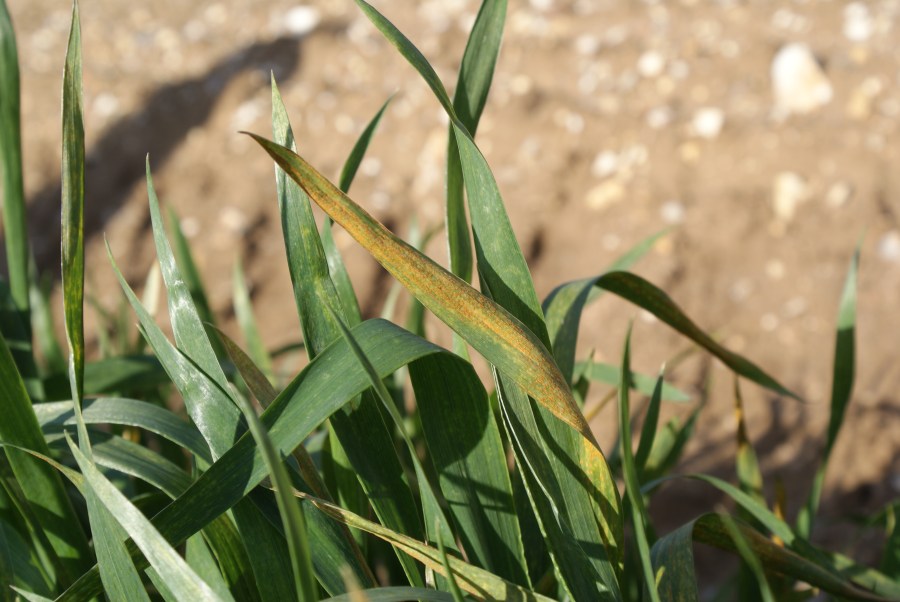Growers are being urged to stay alert for early-season yellow rust outbreaks appearing unexpectedly, especially in backward crops, according to the latest advice from Syngenta. Charlotte Cunningham reports.
According to Syngenta’s senior field technical manager, Iain Hamilton, early rust reports are already coming in, after the mild winter did little to check infection.
Historic survey work has also shown a trend to more yellow rust in later-drilled crops, rather than less, so this season’s late-planted wheat with small leaves could be especially vulnerable, he adds.
“Although the winter was wet, it was mild and yellow rust needs temperatures cold enough to kill the infected leaf to fully halt the disease.
“Later-drilled crops may be facing reduced septoria risks, but growers should be aware this won’t necessarily be the case for yellow rust, particularly as few varieties have juvenile plant resistance.
“Of particular concern in backward crops with small leaves is that even just a few rust pustules will cover a large percentage of the leaf area, and recent seasons have highlighted just how unpredictably yellow rust can escalate.”
Varietal resistance
While a variety’s yellow rust resistance rating needs factoring into fungicide decisions, Iain warns to not make this the only criteria. “Trials analysis last season showed it was hard to predict yellow rust levels based purely on variety resistance, and resistance ratings can change over a year. Generally, the advice would be that if you see it in the field, then you should treat.”
“Don’t panic but be vigilant. Assess risks carefully, especially in backward crops, and remember that prevention is better than cure.”
Certainly an early-season T0 fungicide should not be ruled out in susceptible varieties, and applying Amistar preventatively at T0 has shown good results as an alternative to using an azole fungicide, he adds.
By treating preventatively, Iain says it minimises the chance of the disease getting out of hand. However, if yellow rust is already established at T0, then a rust-active azole should be considered.
“Continuing through the season, it will be important to ensure fungicide programmes maintain yellow rust activity, wherever there is a risk.
“The rust-active SDHI fungicide, Elatus Era, is an obvious choice for later applications, but it can only be applied once. Where yellow rust is a prime concern, our guidance is to consider it at the T1 timing to contain the disease, rather than leaving it until T2.
“Although Septoria certainly cannot be forgotten about this year, the trend to growing varieties with better Septoria tritici resistance could see reduced Septoria pressure where winter wheat crops were drilled late.”




